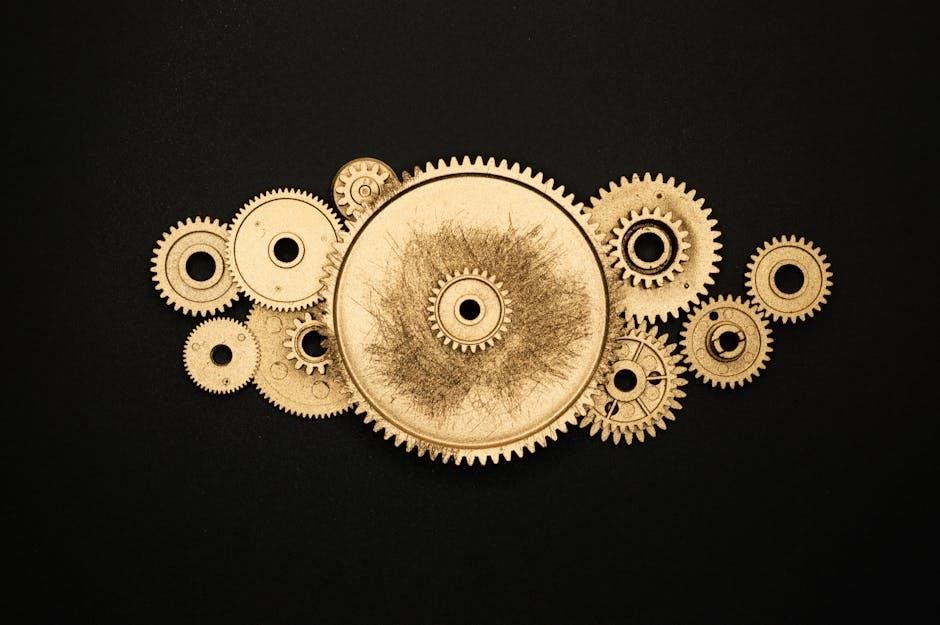AMG typically prioritizes high-performance capabilities through advanced automatic transmissions, but rare exceptions like the W210 E55 manual swap highlight enthusiast interest in bespoke manual conversions.
Brief Overview of AMG and Its Transmission History
AMG, known for high-performance vehicles, has historically focused on automatic transmissions to optimize power delivery and driver convenience. While AMG cars rarely feature manual transmissions, early models like the W126 SEC with DOHC heads offered manual options. The W210 E55 AMG, famously swapped with a 6-speed manual, highlights enthusiast demand for such configurations. AMG’s transmission history reflects a shift toward advanced automatics, such as the 7-speed dual-clutch and 9-speed automatic, prioritizing performance and usability. Despite this, niche interest in manual transmissions persists, driven by enthusiasts seeking unique driving experiences.
Importance of Manual Transmissions in High-Performance Vehicles
Manual transmissions in high-performance vehicles offer unparalleled driver engagement and control, fostering a direct connection between the driver and the car. For enthusiasts, the tactile experience of shifting gears enhances the driving thrill, especially in high-torque engines. While AMG primarily focuses on automatics for convenience and performance, manual transmissions provide a unique appeal. The Aston Martin Vantage AMR, equipped with a Graziano 7-speed manual, exemplifies how manuals can deliver precise control and dynamic driving experiences. Despite technical challenges like torque capacity and software integration, manual transmissions remain a sought-after feature for purists seeking authenticity and driving satisfaction in high-performance cars.
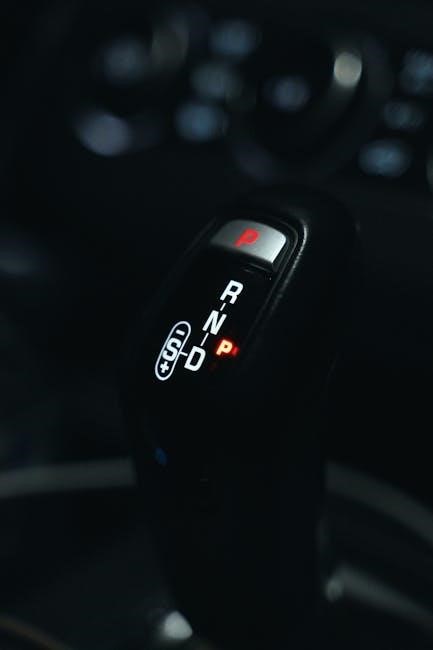
Historical Context of Manual Transmissions in AMG Cars
AMG historically focused on automatic transmissions for performance and convenience, with rare manual exceptions like the Graziano 7-speed in the Aston Martin Vantage AMR.
Early AMG Models and Their Transmission Options
Early AMG models, such as the W126 SEC with DOHC heads, occasionally featured manual transmissions, albeit in limited numbers. These rare configurations were often bespoke or special orders. By the 1990s and early 2000s, AMG shifted focus toward automatic transmissions, prioritizing performance and convenience. Manual options became scarce, reflecting the brand’s emphasis on high-torque engines and seamless automatic shifting. However, niche models like the Graziano 7-speed in the Aston Martin Vantage AMR hinted at AMG’s capability to integrate manual transmissions when collaboration or unique projects arose. Despite this, manual transmissions remained absent from most production AMG vehicles, underscoring the brand’s commitment to automatic and dual-clutch technologies for optimal performance.
Decline of Manual Transmissions in Modern AMG Vehicles
The decline of manual transmissions in modern AMG vehicles is evident, as Mercedes-Benz has significantly reduced manual options across its lineup. Currently, only 22 out of 240 Mercedes models offer a manual transmission, with AMG cars being entirely excluded. This shift reflects AMG’s focus on high-torque engines and advanced automatic transmissions, which better suit the brand’s performance goals. The increasing popularity of dual-clutch and automated transmissions has further accelerated the phasing out of manuals. While exceptions like the Aston Martin Vantage AMR with a Graziano 7-speed manual exist, such cases are rare and often tied to niche collaborations. As of 2023, Mercedes has officially discontinued manual transmissions, except for a few compact models, solidifying the trend toward automatic dominance in AMG’s lineup.

Why AMG Typically Avoids Manual Transmissions
AMG prioritizes high-torque engines and advanced dual-clutch transmissions for optimal performance, as manual transmissions often lack the durability and efficiency needed for such powerful setups.
Technical Limitations of Manual Transmissions for High-Torque AMG Engines
AMG engines, particularly their high-torque V8 powerplants, often exceed the capabilities of manual transmissions, leading to gearbox strain and potential failure under extreme driving conditions. The immense torque output, especially in modern AMG models, can overwhelm standard manual transmissions, causing premature wear and reduced durability. Additionally, the engineering and software integration required to pair a manual transmission with AMG’s advanced engine management systems pose significant technical challenges. While enthusiasts may covet manual shifting, the limitations in handling high torque and maintaining seamless performance make automatic and dual-clutch transmissions more practical for AMG’s high-performance applications.
Modern Shift Toward Automated and Dual-Clutch Transmissions
AMG has increasingly embraced automated and dual-clutch transmissions to optimize performance and efficiency in its high-torque engines. These systems deliver rapid, precise shifts, enhancing acceleration and responsiveness. Dual-clutch transmissions, like the AMG SPEEDSHIFT DCT, offer the convenience of automatic shifting while retaining the driving engagement of a manual. This shift aligns with market trends favoring automation and reduces the technical challenges associated with manual transmissions. As a result, modern AMG vehicles prioritize these advanced transmission systems, ensuring peak performance without compromising usability. This approach reflects AMG’s commitment to innovation and delivering exceptional driving experiences tailored to contemporary demands.

Notable Exceptions and Special Models
The W210 E55 AMG with a 6-speed manual swap and the Aston Martin Vantage AMR with a Graziano 7-speed manual stand out as rare exceptions.
The W210 E55 AMG with a 6-Speed Manual Transmission Swap
The W210 E55 AMG is a standout example of a high-performance sedan that was originally sold with only an automatic transmission. However, enthusiasts have taken matters into their own hands, creating bespoke manual transmission swaps; This particular model, featuring a 6-speed manual gearbox, showcases the dedication of the AMG community to driver engagement. The swap involves replacing the automatic components, including the pedals and flywheel, to accommodate the manual setup. While Mercedes never offered this configuration from the factory, the result is a unique driving experience that combines the E55’s powerful V8 engine with the precision of a manual transmission. This modification highlights the passion for manual driving in high-performance vehicles, even as the automotive industry increasingly favors automatic and dual-clutch transmissions.
Aston Martin Vantage AMR with a Graziano 7-Speed Manual Transmission
The Aston Martin Vantage AMR stands out as a rare modern example offering a manual transmission option, specifically a Graziano 7-Speed unit. This gearbox, shared with the Mercedes-AMG GT, provides precise and engaging shifts, catering to driving purists. The Vantage AMR’s manual transmission is a deliberate nod to enthusiasts who value driver involvement and tactile feedback. Despite the industry’s shift toward automated transmissions, Aston Martin’s decision to include this option underscores the enduring appeal of manual driving in high-performance cars. The Graziano 7-Speed enhances the Vantage AMR’s dynamic character, making it a unique choice for those seeking a more connected driving experience.
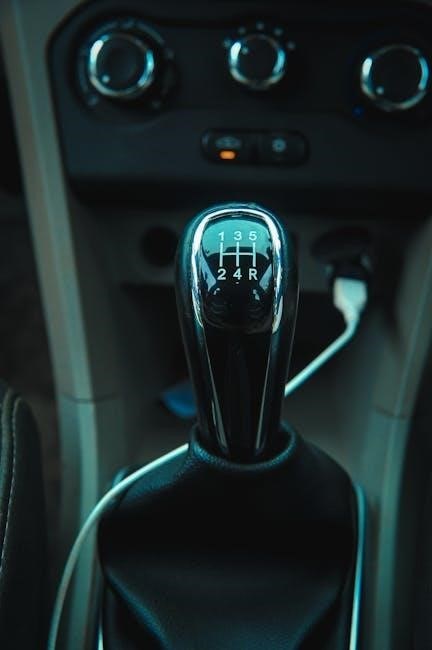
The Manual Transmission Conversion Movement
Enthusiasts and third-party shops are driving a grassroots movement to install manual transmissions in AMG vehicles, enhancing driver engagement and personalization through custom conversions and swaps.
Community-Driven Projects and Enthusiast Modifications
The manual transmission conversion movement has gained momentum through enthusiasts and community-driven projects, where owners modify their AMG vehicles to install manual gearboxes. Shops like Kwiek Customs specialize in giving modern classic Mercedes models manual transmissions, catering to purists seeking a more engaging drive. Enthusiasts often share their experiences online, detailing swaps like the W210 E55, which involved replacing the automatic with a 6-speed manual. These projects highlight the dedication of fans who value the tactile experience of shifting gears, despite the technical challenges. Such modifications not only preserve the spirit of driving but also demonstrate the creativity and passion within the AMG community, offering a unique twist on high-performance vehicles traditionally equipped with automatics.
Third-Party Shops and Custom Conversion Solutions
Third-party shops have emerged as key players in offering custom manual transmission solutions for AMG vehicles. Companies like Kwiek Customs specialize in retrofitting modern classic Mercedes models with manual gearboxes, providing enthusiasts with bespoke options. These shops often source transmissions from other models or manufacturers, such as the Graziano 7-speed used in the Aston Martin Vantage AMR, and adapt them for AMG engines. Custom conversions require extensive modifications, including drivetrain adjustments and software recalibrations. Such solutions cater to purists seeking a more tactile driving experience, offering a unique alternative to AMG’s traditional automatic transmissions. These third-party services have become vital for enthusiasts looking to personalize their high-performance vehicles with manual shifting capabilities.

Technical Challenges of Manual Conversions
Manual conversions for AMG vehicles face torque capacity issues, requiring reinforced gearboxes and drivetrain modifications. Software adaptations are also essential to integrate manual shifting seamlessly with high-performance engines.
Torque Capacity and Gearbox Durability Issues
AMG engines, known for their high torque output, pose significant challenges for manual transmissions. Stock manual gearboxes often struggle to handle the immense power, leading to durability concerns. Enthusiasts opting for manual swaps must address torque capacity by upgrading to reinforced gearboxes and drivetrain components. The W210 E55 AMG, for instance, required custom solutions to manage its 5.4L V8’s power. Without such modifications, manual transmissions risk premature wear or failure. This limitation explains why AMG historically avoided manual options, focusing instead on advanced automatics. The need for specialized hardware underscores the complexity of integrating manual transmissions into high-torque AMG vehicles.
Software and Hardware Adaptations for Manual Transmission Integration
Integrating a manual transmission into an AMG vehicle requires extensive software and hardware modifications. The primary challenge lies in adapting the drivetrain to handle high torque while maintaining optimal performance. This often involves custom gearbox swaps, such as the Graziano 7-speed unit used in the Aston Martin Vantage AMR, which can bolt directly to AMG engines. Additionally, hardware modifications like lightweight flywheels and reinforced clutch systems are necessary to manage the stress of manual shifting. Software adjustments include reprogramming the ECU to optimize engine behavior with manual inputs and integrating features like rev-matching. These adaptations ensure seamless integration of manual transmissions into high-performance AMG powertrains, addressing both mechanical and electronic limitations to deliver a refined driving experience.
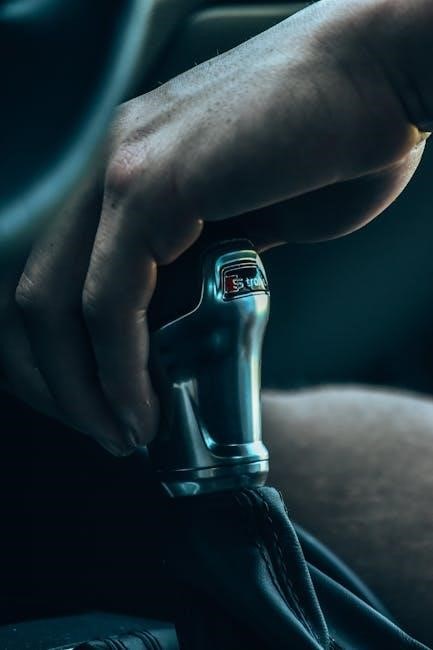
Driving Experience with a Manual AMG
Driving a manual AMG offers a unique connection between driver and machine, enhancing performance with precise control and delivering unparalleled satisfaction behind the wheel;
Performance Impact of Manual vs. Automatic Transmissions
The debate between manual and automatic transmissions in AMG vehicles often centers on performance and driver engagement. Manual transmissions can provide quicker, more direct shifts, allowing drivers to maximize acceleration and control, especially in spirited driving scenarios. However, AMG’s high-torque engines often exceed the capacity of manual gearboxes, making automatic transmissions more practical for harnessing full power. Modern automatic and dual-clutch transmissions, like the AMG SPEEDSHIFT DCT, offer faster shifting and better low-end torque utilization, often outperforming manual options in terms of raw speed. Despite this, enthusiasts argue that manuals deliver a more immersive driving experience, even if they sacrifice some outright performance capabilities. The choice ultimately depends on prioritizing driver involvement or absolute speed and efficiency.
Driver Engagement and Satisfaction with Manual Shifts
Manual transmissions in AMG vehicles, though rare, offer a unique driving experience that fosters a deeper connection between the driver and the car. The tactile feedback of shifting gears and the control over acceleration provide a sense of engagement that automatic transmissions often lack. Enthusiasts argue that manuals allow for more precise control, particularly in dynamic driving situations, making the experience more immersive and rewarding.
However, AMG’s focus on high-performance automatics has led to a trade-off in driver involvement. While modern automatics deliver exceptional speed and efficiency, the absence of a manual option leaves some enthusiasts longing for the mechanical connection and satisfaction that only a manual gearbox can provide. This emotional and tactile aspect remains a key reason why some pursue custom manual conversions or seek out rare models like the W210 E55 with a manual swap.
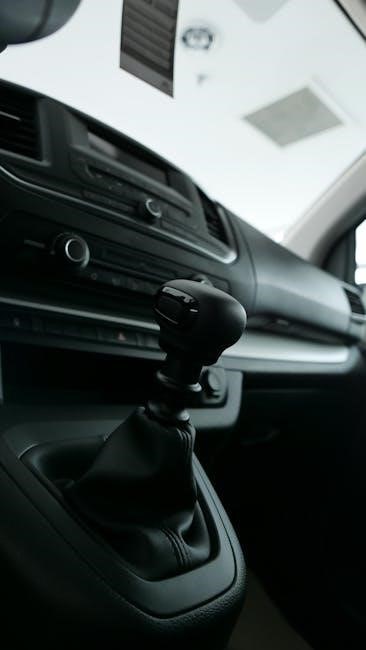
Future of Manual Transmissions in AMG
Manual transmissions in AMG’s future lineup are unlikely due to technical limitations and market trends favoring automated options, though niche enthusiast demand may inspire rare manual exceptions.

Market Trends and Consumer Demand for Manual Options
Market trends increasingly favor automated and dual-clutch transmissions, with manual options becoming rare in modern vehicles. Mercedes-Benz, for instance, offers manual transmissions in only 22 out of nearly 240 models, primarily in compact cars. This decline reflects consumer preferences for convenience and efficiency, especially in high-performance segments like AMG. However, niche enthusiast demand persists, driving interest in manual conversions and bespoke swaps. Third-party shops and communities cater to this audience, showcasing a dedicated yet limited market. While AMG prioritizes advanced automatics for performance and usability, the allure of manual driving remains strong among purists, keeping the conversation alive despite the industry’s shift toward automation.
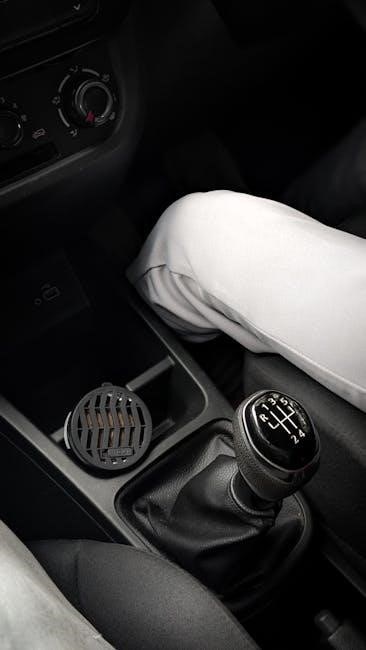
Potential for Future AMG Models with Manual Transmission Options
While AMG has historically focused on automatic and dual-clutch transmissions, niche demand for manual options persists among enthusiasts. The success of manual transmissions in vehicles like the Aston Martin Vantage AMR, which shares its V8 with AMG, demonstrates potential for future integration. Pagani’s Huayra, featuring an AMG V12 with a manual option, further highlights the feasibility of manual gearboxes in high-performance applications. However, AMG’s emphasis on automation and electrification suggests manuals may remain rare. Third-party shops and custom conversions continue to cater to purists, proving manual transmissions can coexist with AMG’s high-torque engines. While no official plans for manual AMG models exist, enthusiast demand and technical advancements could pave the way for limited-edition manual offerings in the future.
